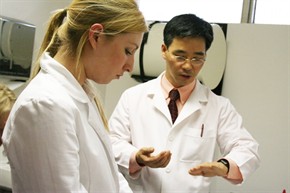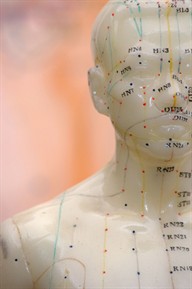How Cadavers Help Train Better Acupuncturists
 National University is one of only a few schools in the world with an acupuncture program that incorporates the dissection of cadavers for acupuncture point and meridian studies.
National University is one of only a few schools in the world with an acupuncture program that incorporates the dissection of cadavers for acupuncture point and meridian studies.
The cadaver-based anatomy lab helps students get a three-dimensional understanding of the acupuncture points they will be needling on their future patients. Traditional methods for locating acupuncture points typically lean on palpation skills – feeling for landmarks on the surface of the body. Because palpation alone can be very subjective, modern acupuncture is leaning more toward exact point location based on anatomical structure.
Enhanced understanding of anatomy
In the lab, as students dissect the body through skin, superficial fascia, muscle and bone, they follow the point locations through each layer of tissue.
Students come away with a deeper understanding of all the anatomical structures their acupuncture needle is stimulating, and at which depths different tissue can be accessed by the needle. Seeing the structures firsthand also helps students avoid any risk of needling in the wrong place or at the wrong depth. This way, students are able to practice better point location skills after graduation.
Combining eastern and western philosophies
 National University’s anatomy program is an ideal example of the productive integration of a western and eastern medical education.
National University’s anatomy program is an ideal example of the productive integration of a western and eastern medical education.
The anatomy course was the first of its kind in the world when National University opened its master’s degree program in acupuncture in 2006. After seeing the benefits of integrating the functional eastern perspective on acupuncture points with a western structural perspective, other universities in Asia have created new anatomy programs similar to National University. This includes TianJin University in China.
“Accepting western medicine does not hurt or contaminate our eastern medicine, but actually reinforces it and makes strong our weak points,” said Dr. Yihyun Kwon, who teaches anatomy to the university’s acupuncture students.
Watch a video of Jacob Suh, an MSOM student, to see why he’s excited about learning anatomy from dissecting real human cadavers in the university’s gross anatomy laboratory, and how understanding the physiology and science behind Chinese herbal medicine gives him a greater perspective on patient care.

